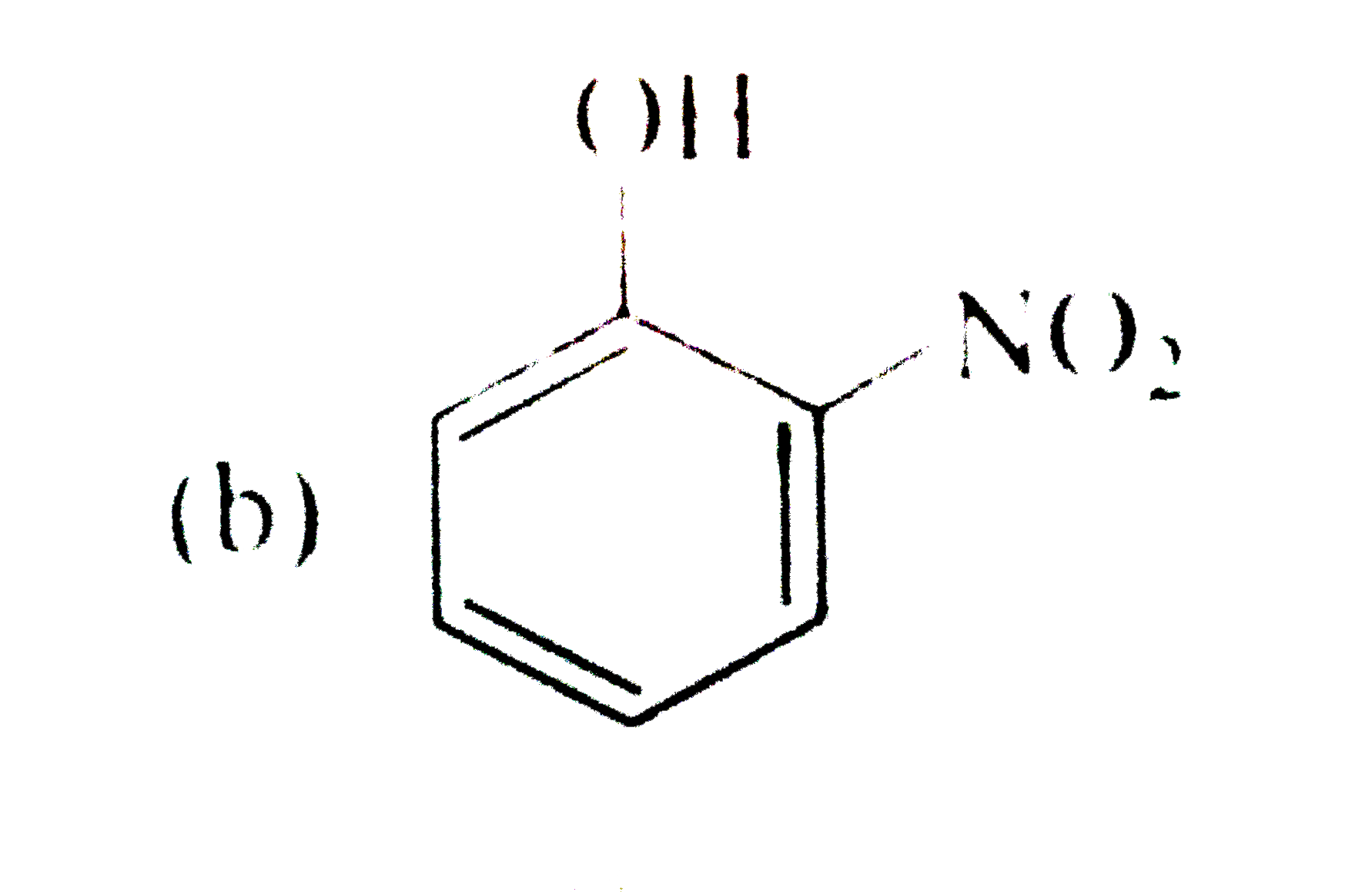Which one of the following compounds shows the presence of intramolecular hydrogen bond?
Cellulose
Concentrated acetic acid
H2O2
HCN
The correct Answer is:A
To determine which of the given compounds shows the presence of intramolecular hydrogen bonding, we need to analyze each compound based on the definition of intramolecular hydrogen bonding. Intramolecular hydrogen bonding occurs within a single molecule, where a hydrogen atom is attracted to an electronegative atom (like oxygen or nitrogen) within the same molecule, forming a bond.
1. Understand Intramolecular vs. Intermolecular Hydrogen Bonding:
- Intramolecular hydrogen bonding occurs within a single molecule.
- Intermolecular hydrogen bonding occurs between different molecules.
2. Analyze the Compounds:
- Cellulose: Cellulose is a polymer made up of long chains of glucose units. In its structure, there are hydroxyl (–OH) groups that can participate in hydrogen bonding within the same molecule. This can lead to the formation of intramolecular hydrogen bonds.
- Concentrated Acetic Acid: The structure of acetic acid does not form a stable ring structure that would allow for intramolecular hydrogen bonding. The hydrogen bonding occurs between different acetic acid molecules (intermolecular).
- Hydrogen Peroxide (H2O2): While H2O2 can form hydrogen bonds, these are primarily intermolecular due to the lack of a stable intramolecular structure that would allow for such bonding.
- Hydrogen Cyanide (HCN): HCN does not have the necessary structure to form intramolecular hydrogen bonds as it lacks the required electronegative atoms in a suitable arrangement.
3. Conclusion:
- Based on the analysis, Cellulose is the compound that shows the presence of intramolecular hydrogen bonding due to its structure allowing for hydrogen bonds within the same molecule.
Final Answer:
Cellulose shows the presence of intramolecular hydrogen bonding.
- Intramolecular hydrogen bonding occurs within a single molecule.
- Intermolecular hydrogen bonding occurs between different molecules.
- Cellulose: Cellulose is a polymer made up of long chains of glucose units. In its structure, there are hydroxyl (–OH) groups that can participate in hydrogen bonding within the same molecule. This can lead to the formation of intramolecular hydrogen bonds.
- Concentrated Acetic Acid: The structure of acetic acid does not form a stable ring structure that would allow for intramolecular hydrogen bonding. The hydrogen bonding occurs between different acetic acid molecules (intermolecular).
- Hydrogen Peroxide (H2O2): While H2O2 can form hydrogen bonds, these are primarily intermolecular due to the lack of a stable intramolecular structure that would allow for such bonding.
- Hydrogen Cyanide (HCN): HCN does not have the necessary structure to form intramolecular hydrogen bonds as it lacks the required electronegative atoms in a suitable arrangement.
- Based on the analysis, Cellulose is the compound that shows the presence of intramolecular hydrogen bonding due to its structure allowing for hydrogen bonds within the same molecule.
Cellulose shows the presence of intramolecular hydrogen bonding.
Topper's Solved these Questions
- BOOK - PHYSICS WALLAHCHAPTER - CHEMICAL BONDING AND MOLECULAR STRUCTURE EXERCISE - Level -248videos
CHEMICAL BONDING AND MOLECULAR STRUCTURE
- BOOK - PHYSICS WALLAHCHAPTER - BIOMOLECULESEXERCISE - NEET PAST 5 YEARS QUESTIONS13videos
BIOMOLECULES
- BOOK - PHYSICS WALLAHCHAPTER - CHEMISTRY IN EVERDAY LIFE EXERCISE - NEET PAST 5 YEARS QUESTIONS6videos
CHEMISTRY IN EVERDAY LIFE
Similar Questions
Structures of molecules of two compounds are given below :

(a) Which of the following compounds will have intermolecular hydrogen bonding and which compound is expected to show intramolecular hydrogen bonding?
(b) Which of the above two compounds will show higher melting point?
(c ) Which of the above compounds will form hydrogen bond with water easily and be more soluble in it?View SolutionWhich of the following compound does not consist of inter molecular hydrogen bonding?
View Solution
Knowledge Check
- Question 1 - Select One
Which one of the following compounds shows the presence of intramolecular hydrogen bond?
AConcentrated acetic acidBH2O2CHCNDCellulose - Question 2 - Select One or More
The hydrogen bond is an electrostatic attractive force between covalently bonded hydrogen atom of one molecule and an electronegative atom like (F,O,N) of other molecule. Hydrogen bond is nearly an electrostatic attractive force and not a normal chemical bond. It is very weak (2-10 kcal/mol) as compared to a colvent bond (strength 50-100 kcal/mol). In intramolecular hydrogen bonding, the two or more than two molecules of the same or different substances are linked to form polymeric aggregate. Intermolecular hydrogen bonding increases the boiling point of the compound and also its solubility in water. Intramolecular hydrogen bonding occurs within two atoms of the same molecule. Intramolecular hydrogen bonding is also called chelation, since it involves ring formation. intramolecular hydrogen bonding decreases the boiling point of the compound and also its solubility in water.
Which of the following compounds is (are) stabilised by intramolecular hydrogen bonding?ACl−CI∣C∣CI− OH∣C∣ OH−HB CCH3−OH∣C=CH−O∣∣C−OC2H5DCH2OH∣CH2OH
CCH3−OH∣C=CH−O∣∣C−OC2H5DCH2OH∣CH2OH - Question 3 - Select One
Which of the following compound shows H-bonding?
ARCH2NHCH3BRCH2CHOCC2H6DHCl
Which of the following compounds shows evidence of the strongest hydrogen bonding?
View SolutionWhich of the following compounds shows evidence of the strongest hydrogen bonding?
View SolutionWhich among the following compounds will form intra - molecular hydrogen bond ?
View SolutionWhich of the following has presence of intramolecular hudrogen bonding ?
View SolutionWhich of the following compounds has the least tendency to form hydrogen bonds between molecules?
View Solution

